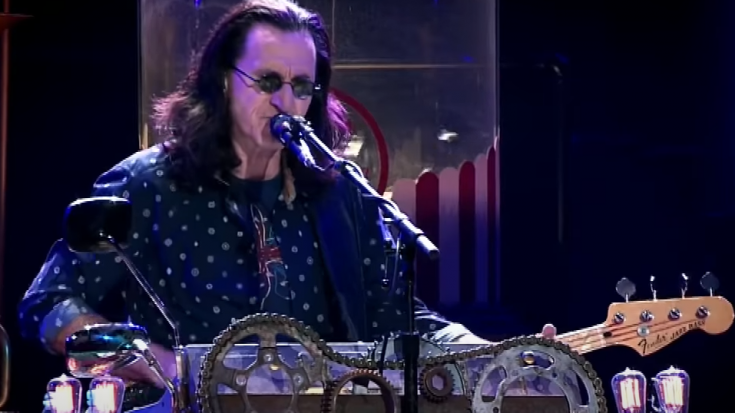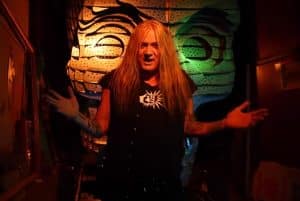Rush Reveals The Creation Of “YYZ”

via RushWire / Youtube
The phenoms behind Canadian prog-rock legend Rush are known for their musical prowess. Three musical wizards with their favorite instruments create sonic sorcery that continues to melt minds even to this day.
While these rock deities conjured a catalog of longer and more intricate compositions over the years, it was in the four-minute-and-a-half “YYZ” that they somehow marvelously packed every ounce of their musicianship.
The blistering and spellbinding instrumental from their 1981 offering Moving Pictures was a masterful display of exciting complexity that draws listeners in and refuses to let go. The song’s fusion of rock, progressive, and experimental elements was pure Rush wizardry.
And the unlikely inspiration behind it? The Toronto International Airport, specifically the airport’s identification code, YYZ.
In a 2015 feature from their Classic Albums: 2112 & Moving Pictures special, the trio excitedly shared how the Morse code of YYZ sparked the creativity behind Rush’s iconic masterpiece.
Check out the official animated music video of the instrumental released just in 2022 as part of the Moving Picture’s 40th year anniversary.
The creative spark behind “YYZ”
Hear that iconic head-banging intro? That’s the musical rendering of YYZ in Morse code, in different musical arrangements, all played in a mind-bending 10/8 time signature.
That is just number one of the long list of why “YYZ” was one of the best rock instrumental songs ever made.
“It’s interesting. We were coming back from Le Studio when we were making the record just for a break back home and a friend of mine – he was actually my flight instructor – he came and picked us up in a small plane from the little airline that flew out of the small airport,” Alex Lifeson shared. “And on the way back, they tuned in the identifier for Toronto airport, which is YYZ.”
View this post on Instagram
What the band heard was a Morse broadcast of YYZ through the VHF omnidirectional range system of the airport.
“The rhythm stuck in my head and I said, ‘Guys!’,” Neil Peart reminisced. He continued:
“So then, thematically we said, ‘We’ll let’s use that airport – so much a part of our lives in those days and after – let’s use that as a metaphor in a sense. Again, in a playful way. There was no sense of ‘Okay, this part is this part’ and all that. But there is a sense of bustling and coming and going and the grand emotion of that middle section of what airports can be.”
And ‘bustling and coming’ was perfectly illustrated in the composition of YYZ.
Not so easy peasy, YYZ
The intro was a well-crafted enchantment using a structured arrangement denoted as A-B-C-B-A, each of these segments containing further subsections. The song kickstarted with Neil Peart playing the YYZ Morse Code on his crotales (Section A).
Alex Lifeson’s guitar and Geddy Lee’s bass join in, employing the dissonant tritone interval (aka the augmented 4th or diminished 5th) in order to pick out the Morse Code dots and dashes.
After two repetitions of the melody, the synthesizer part ceases, and the bass descends one octave, concluding the introduction with the guitar, bass, and drums accenting solely on the “dashes.” A brief pause of one measure in two-four time (equivalent to a half-note rest) follows before transitioning to the next section.
He is undoubtedly one of the best guitarists in the world… Alex Lifeson @rushtheband pic.twitter.com/BBNSTKOblb
— Prog Rock Songs (@progrocksongs) August 26, 2023
And this is where you breathe in some air and wipe some sweat.
The subsequent section brings in the perfect harmony of guitar, bass, and drums executing scale runs in melodic and rhythmic unison for three measures. Lifeson takes command later with a new melody in the section as Lee falls back as support.
In section C, the guitar once again establishes a structural rhythm using B7 and C7 chords as Peart and Lee exchange fills at the conclusion of each segment. Following an extended drum fill, the guitar solo is grounded in the 5th mode of E Harmonic Minor,
The solo reaches the climax with a legato, descending guitar lick, while the synth soars accompanied by equally flying guitar lines. The song then revisits earlier sections introduced earlier, culminating in a synchronized musical run featuring bass and drums.
View this post on Instagram
The tiny magical tidbits of notes here and there make up for the other parts of the song, like runes hand-drawn on a musical sheet. The spell is then complete, and the listener dazed in a euphoric lull.
Ah, the geeky minds of Rush are just so good at this. If this mumbo-jumbo escapes your comprehension, just go back to the video above and immerse yourself in the wondrous alchemy that is YYZ. Let your soul decode the complex spell behind it.
Deeper, and simpler, meaning behind the song
Geddy and his friends are definitely musical geeks, with the geekiest of fanbases (did you know Rush has a Fandom wiki?). There’s this one math guy who even broke down the music behind the Morse codes just because he can. And it’s brilliant!
It might sound complicated, and, again, geeky, but the meaning behind “YYZ” wasn’t complicated at all. In fact, it was kind of sweet. The boys, who have become giants of progressive rock, just want to bring “home” wherever they go.
View this post on Instagram
Apart from being the best free advertisement for Toronto International Airport, Peart saw an opportunity to musically express the poignant sense of goodbyes and separations.
“In our lives, airports were rich with symbolism. Departures and comings and goings; departures and arrivals. Separations and meetings. That was kind of woven into the song. The exotic nature of travel, too, and Alex’s guitar solo for sure too. He wove in that kind of eastern mode.”
As for Lee, “YYZ” is about “coming home”.
“It’s that call to home. Being a band that spent so much time on the road, whenever we would check in for that flight home and we would see that YYZ ticket on our bag, it was always really exciting. It was like, ‘We’re coming home.’ So basically we wanted to put a song together about that, and even though it’s instrumental, it’s about our town and about kind of where we came from.”
While the song communicates differently to them, Peart and Lee agree on one thing, though.
“It’s always a happy day when YYZ appears on our luggage tags”.
You can hear more of the Classic Albums discussion in the video below:













